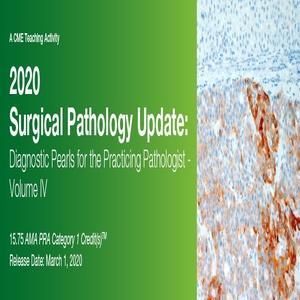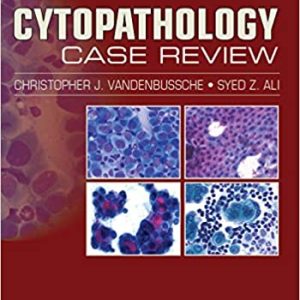Description
This CME activity is designed to provide a practical and comprehensive review of a number of practical topics in surgical pathology including gastrointestinal, pulmonary, gynecologic, hepatobiliary, genitourinary, and soft tissue pathology. An overview of diagnostic pearls which allow for accurate diagnosis and clues to avoiding the most common diagnostic pitfalls are addressed. Faculty discuss appropriate diagnostic immunohistochemical and molecular genetics tests which allow refined diagnosis. Target Audience This CME activity is primarily designed to educate practicing pathologists. Educational Objectives At the completion of this CME teaching activity, you should be able to: Discuss the most common benign and malignant well-differentiated lipomatous tumor. Describe the most useful immunohistochemical and molecular genetic tests in distinguishing soft tissue tumors with the most common patterns. Identify the recent WHO classification of renal cell carcinoma, including the distinction of cortical and medullary-based tumors. Recognize morphologic features that distinguish conventional and variant morphology of urothelial carcinoma. Understand how to diagnose endometrial hyperplasia and metaplasia. Distinguish between different subtypes of endometrial carcinoma, including the role of molecular testing. Differentiate gastroesophageal reflux disease from other types of esophageal injury. Recognize key features of celiac disease and other disorders that cause villous blunting. Discuss the utility of clinical and morphologic features and immunohistochemical stains in the differential diagnosis of hepatocellular mass lesions. Identify key clinical and laboratory features that allow specific diagnoses for medical liver biopsies exhibiting the acute and chronic hepatitis patterns of injury. List the key pathologic features of usual interstitial pneumonitis. Recognize key changes in diagnosis and therapy pertaining to lung pathology. Topics And Speakers: SESSION 1 The Trouble with Fat: Diagnostic Issues with Well-Differentiated Lipomatous Tumors John R. Goldblum, M.D. A Diagnostic Approach to The Many Subtypes of Renal Cell Carcinoma Michelle S. Hirsch, M.D., Ph.D. SESSION 2 Patterns of Esophagitis Rhonda Yantiss, M.D. All You Ever Wanted to Know About UIP Sanjay Mukhopadhyay, M.D. SESSION 3 Practical Approach to the Endometrial Biopsy I: Endometrial Hyperplasia and Metaplasia Marisa Rose Nucci, M.D. Hepatocellular Mass Lesions – New Aspects of Old Problems John Hart, M.D. SESSION 4 Urothelial Carcinoma, Conventional Versus Variant Morphology Michelle S. Hirsch, M.D., Ph.D. IBD and its Mimics Rhonda Yantiss, M.D. SESSION 5 Not Your Grandpa’s Thoracic Pathology: Changes in Concepts, Diagnoses, Terminology, and Therapy in the last 10 years Sanjay Mukhopadhyay, M.D. Practical Approach to the Endometrial Biopsy II: Endometrial Carcinoma Marisa Rose Nucci, M.D. Controversies in Lung Pathology Sanjay Mukhopadhyay, M.D. SESSION 6 Acute and Chronic Hepatitis John Hart, M.D. A Contemporary Approach to Prostate Adenocarcinoma, Including Poor Prognostic Factors Michelle S. Hirsch, M.D., Ph.D. SESSION 7 Common Morphologic Patterns of Soft Tissue Tumors John R. Goldblum, M.D. SESSION 8 NASH and the Differential Diagnosis of Steatohepatitis John Hart, M.D. The Differential Diagnosis of Celiac Disease Rhonda Yantiss, M.D. Update on Endocervical Glandular Neoplasia Marisa Rose Nucci, M.D.





3 reviews for 2020 Surgical Pathology Update Diagnostic Pearls for the Practicing Pathologist Vol. IV
There are no reviews yet.